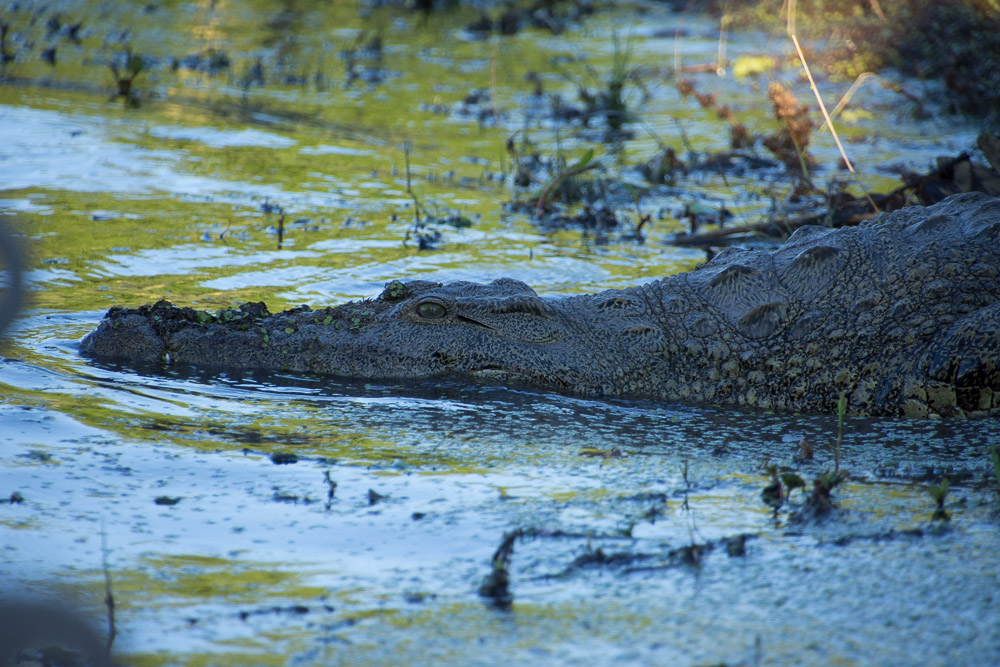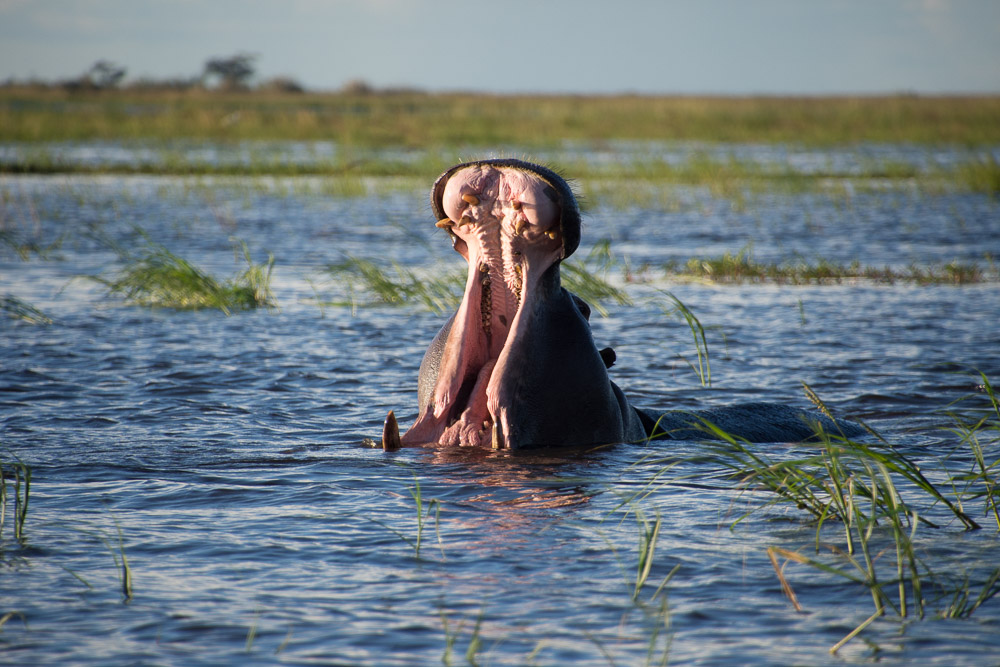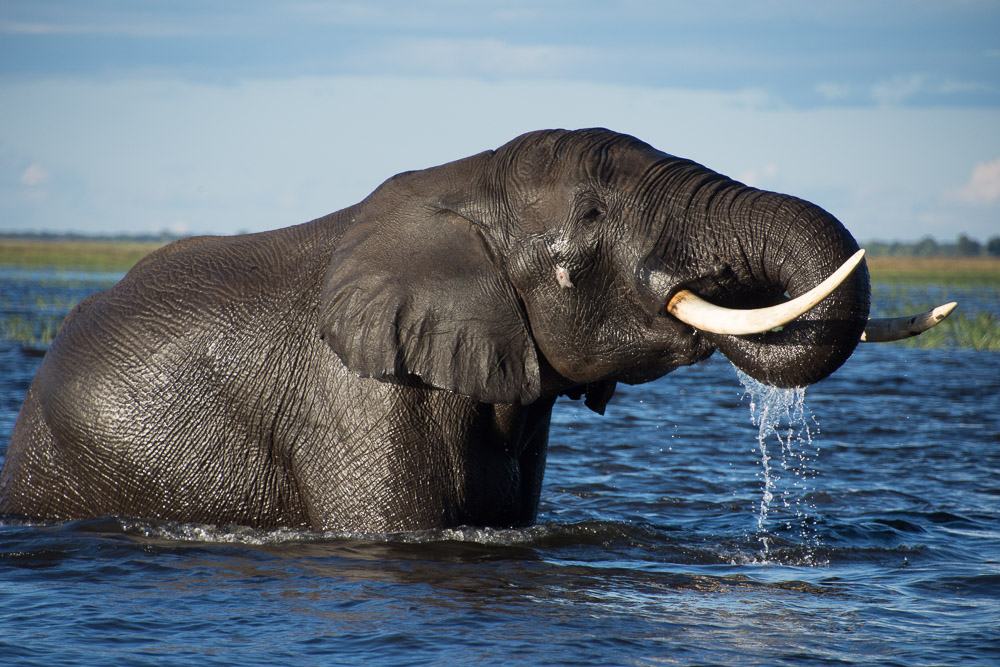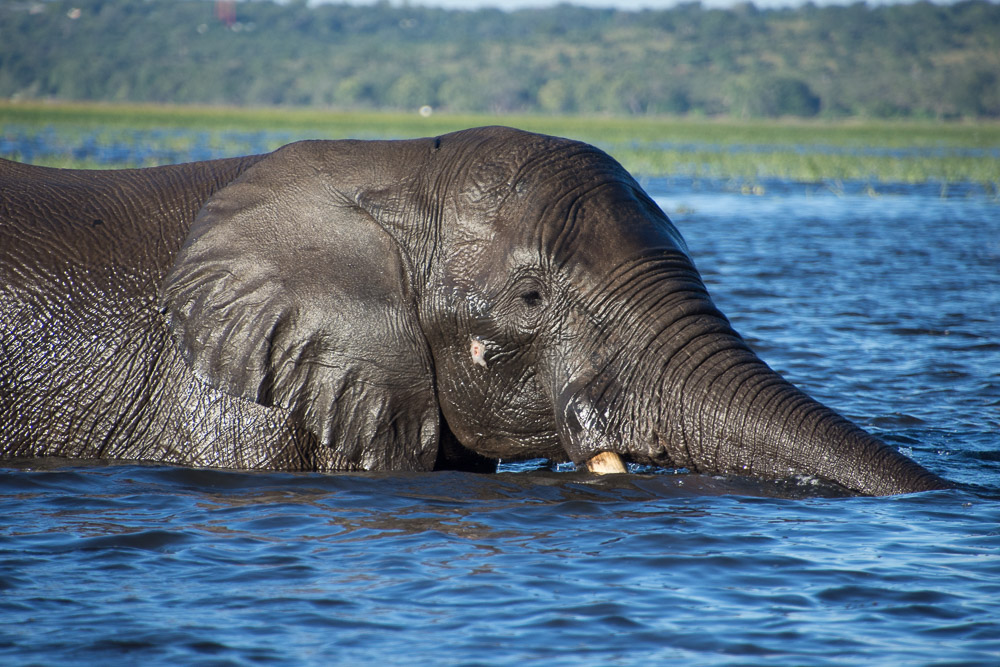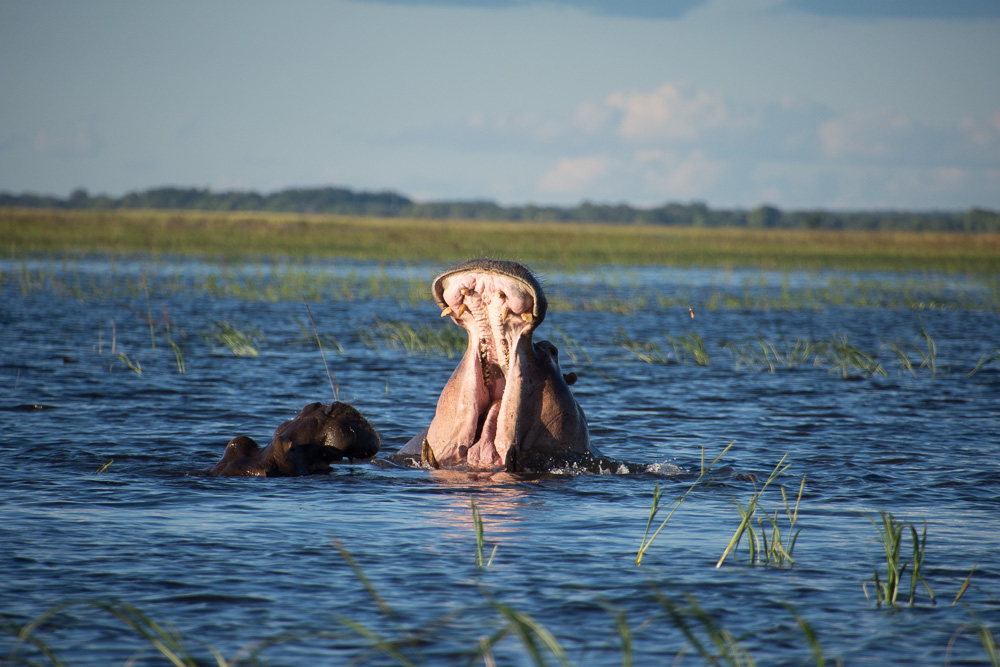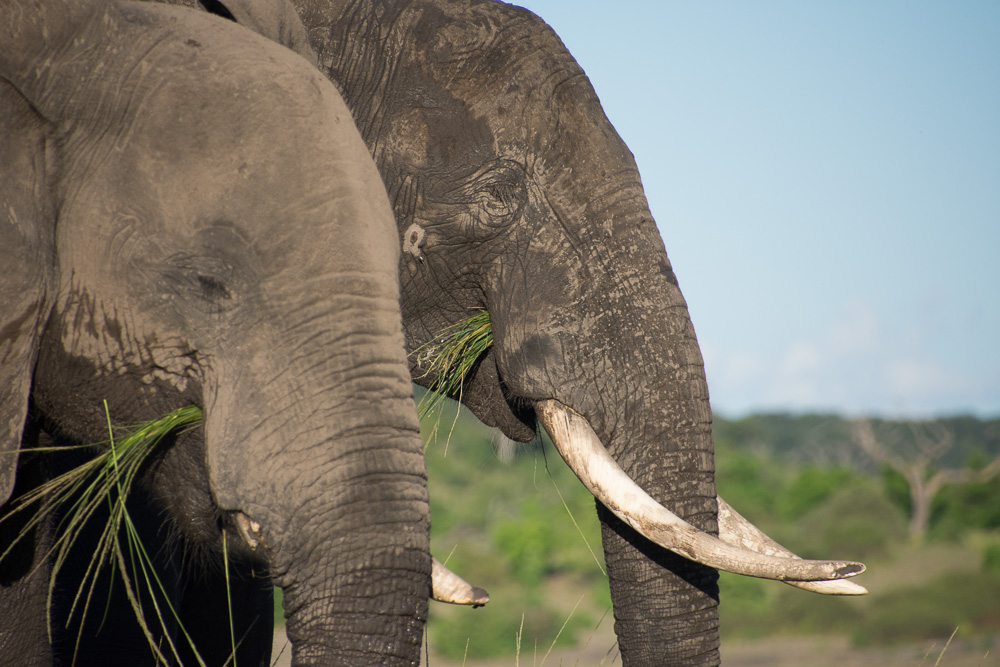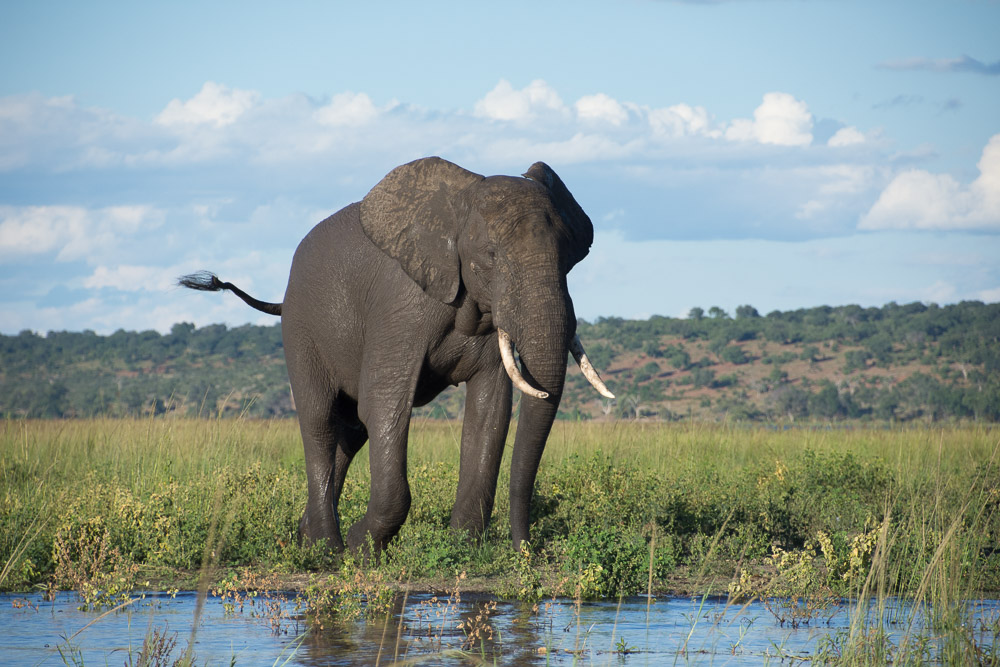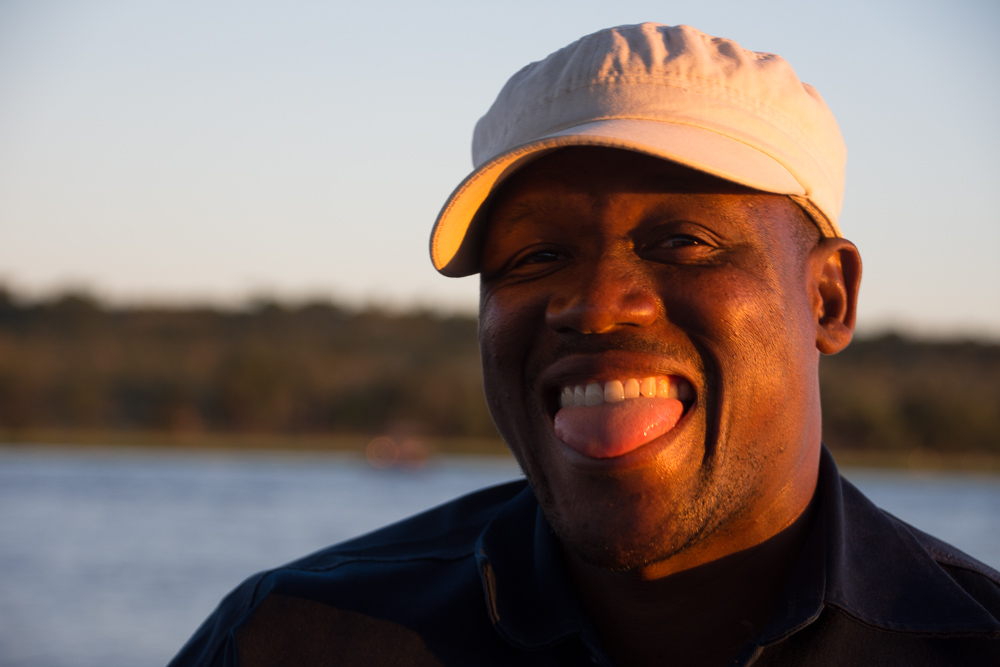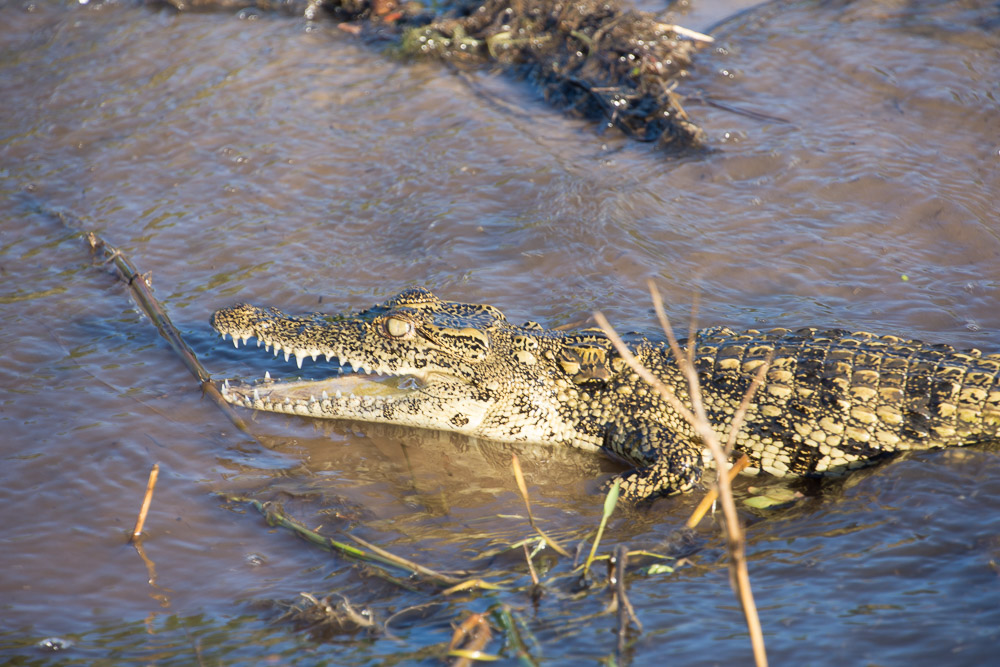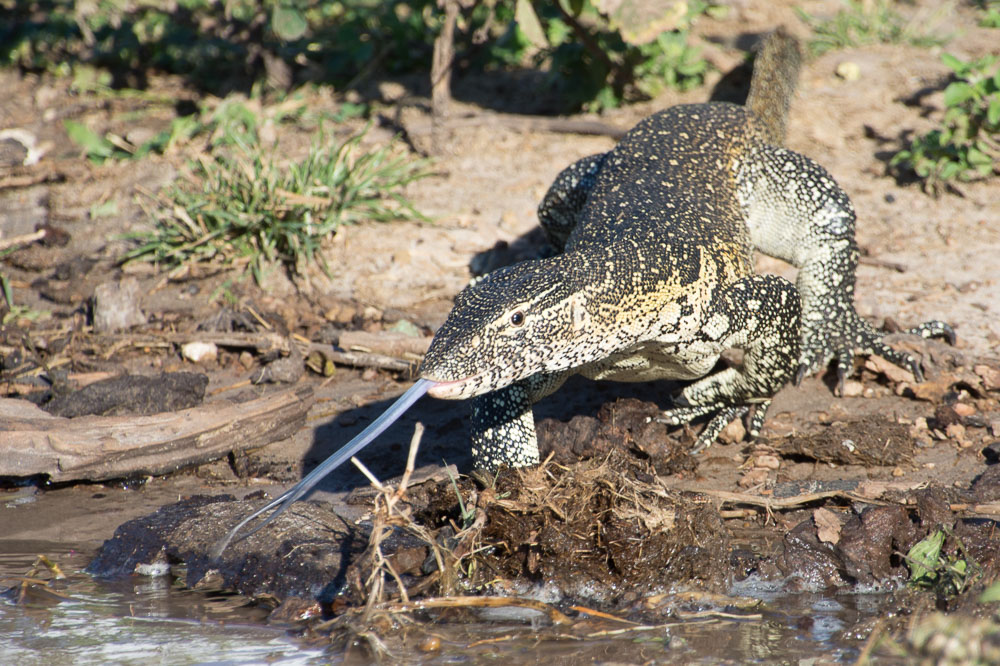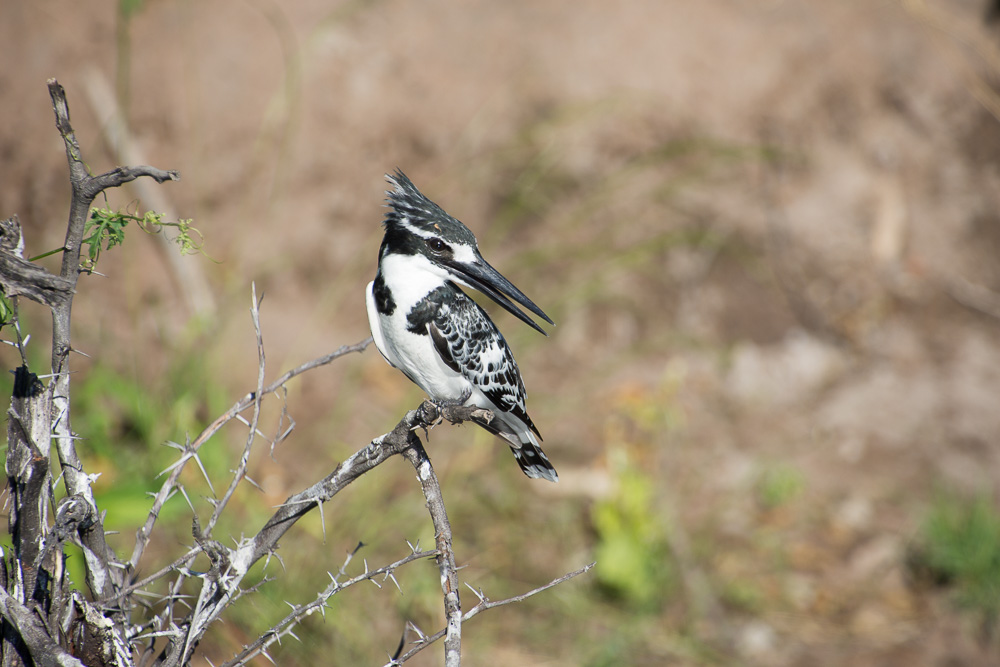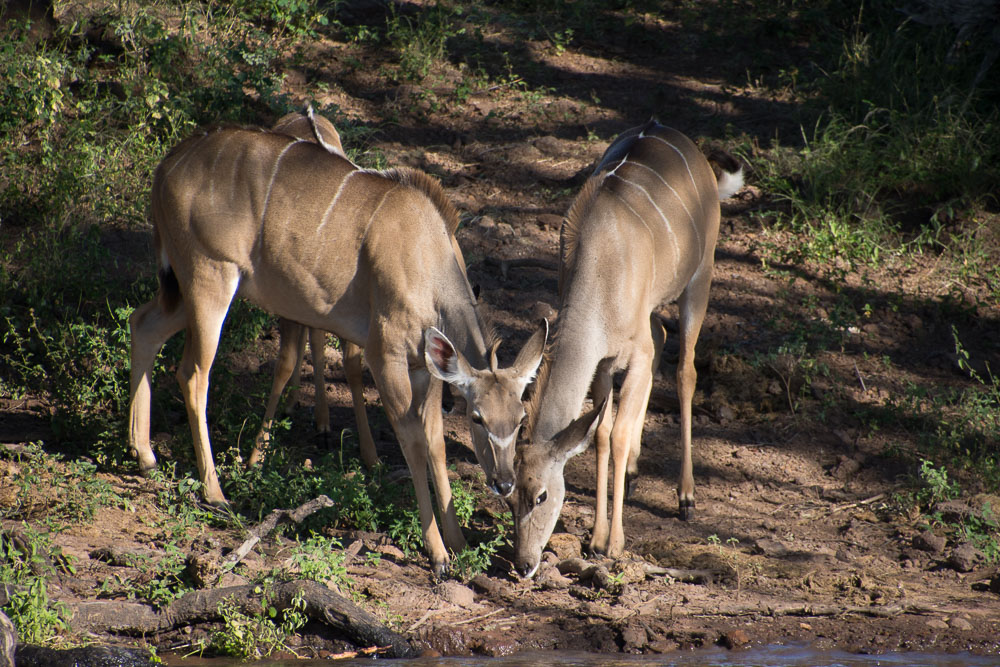Long roads, lodges, lions and a long ladder with baboon poo
Cycling the Elephant Highway to Maun, Botswana
We just had time to publish our last blog post before we left Livingstone, so I thought I’d do a quick recap on our time there.
We had a rendezvous with my brother Francis, my niece Sarah and my nephew Ben. They’d just about recovered from the Zambezi hippo attack.
In Livingstone, we stayed at the Fawlty Towers backpackers. But there was nothing faulty about the establishment. Once through the small front gates, the area opened up to reveal a large manicured garden, pool and bar area and, they even offered free pancakes in the afternoon!
Francis sponsored both Sarah and me to do a bungee jump off the Victoria Falls Bridge. It’s a 113-meter drop, so it was a terrifying way to fundraise another 2 bikes for our World Bicycle Relief campaign. Sarah didn’t hesitate before hurling herself off, which was especially impressive as she only decided to jump about an hour earlier.
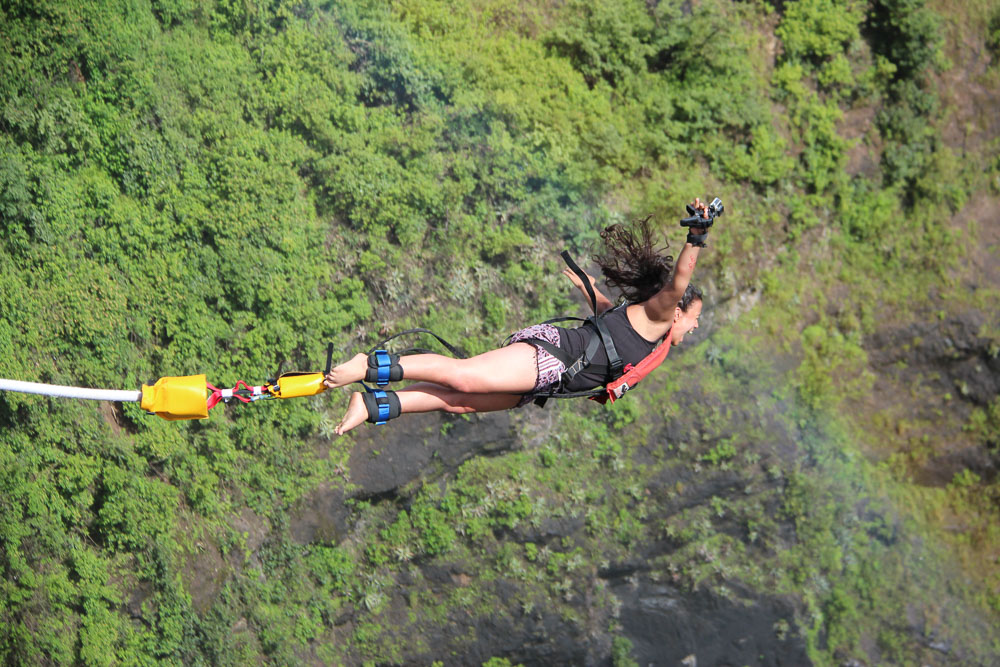
James’s niece, Sarah, throws herself off the Victoria Falls Bridge to raise enough for another 2 bikes for World Bicycle Relief
After saying early-morning goodbyes to my family, we rode to the Zambia/Botswana border at Kazungula. There, we bought fuel for our stove from a guy selling it illegally from his hideout in the bushes. We got our Zambia exit stamps in our passports and wheeled our bikes onto one of the small flat-level ferries that crisscross the Chobe river between Zambia and Botswana. We’d heard that overladen trucks had caused a few ferries to sink in the past resulting in many deaths. Even though there are now mandatory weighbridge checks for trucks, our ferry’s engine was at full revs as it struggled against the current to get us across.
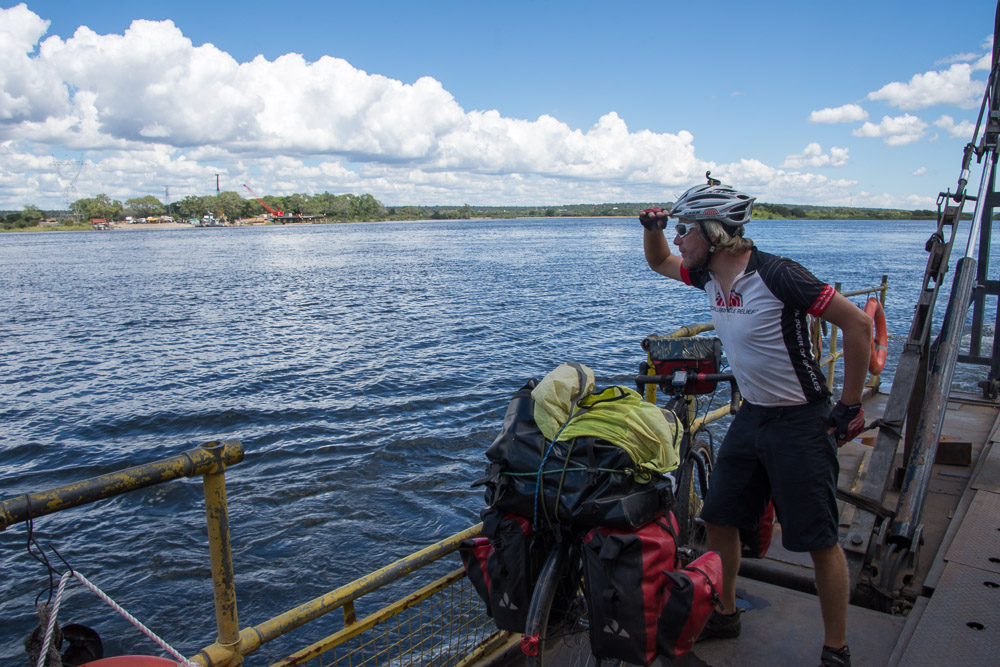
James checks out the view from the Zambia/Botswana ferry across the Chobe River
The ferry at the border crossing is a huge bottleneck for the truckers heading north from Botswana. The queue of trucks can stretch for many kilometres, and we learned that it takes about 8 days from joining the back of the queue to crossing the border into Zambia. The long-awaited construction of a bridge has recently started.
Once stamped into Botswana, our 23rd country, we headed to the magnificent Bakwena Lodge in Kazungula, where we were incredibly grateful to have been invited to stay for the evening.
Owners Adam and Jen told us they’d bought the land in the early 2000s, but they’d had to endure 12 years of bureaucracy before the land was re-zoned from agriculture to leisure/tourism so they could build the lodge. The wait was worth it.
They’ve created a tranquil eco-luxury retreat on the banks of the Chobe River. 10 chalets, each with their own private deck and river view, offer simple luxury and a personal touch that made us feel incredibly special.
We had the most amazing welcome, meals and what’s more, we got to experience a majestic intimate sunset cruise on the Chobe River. This allowed us to see loads of animals (Kudu, crocodiles, monitor lizards and hippos) at close quarters, but the highlight was witnessing two elephants cavorting in the water – just a few meters from us. It was stunning.
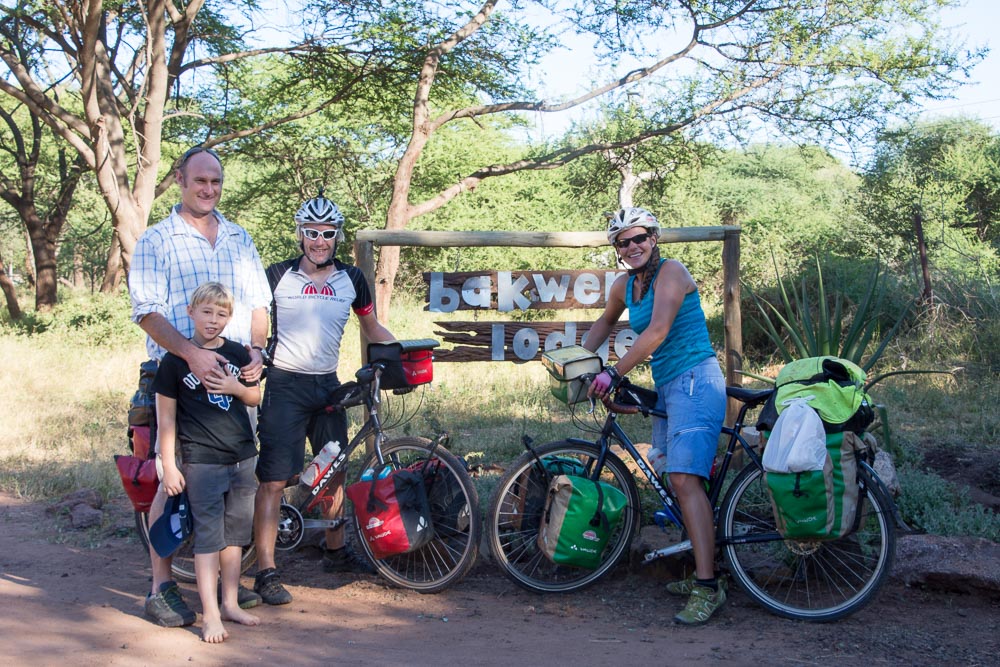
Adam and his son see us off after we spent an amazing evening at Bakwena Lodge
As we got back on our bikes the next morning and the staff sang us a farewell song, we found it very difficult to leave. And, if we’d known what was going to happen to us next, we may well have never left at all!
The stretch of road from Kazungula to Nata is 300km long, with only two places to pick up water and food. After 100km, there’s a tiny town of Pandamatenga, but then there’s nothing for 150km until you reach the Elephant Sands campsite. Then it’s just 50km to the larger town of Nata.
The road slices straight through the Botswana bush, home to tens of thousands of elephants and huge numbers of buffalo, hyenas, leopards and lions. We can’t cycle 150km on our heavy bikes in a day without leaving at dawn and arriving at sunset – which is highly unadvisable because these are the times at that lions are most active.
We had to plan this section carefully.
Emily and I discussed what we should do on this section of the road for many weeks. My preferred option was to wild camp out in the bush. If we lit a fire, the animals would stay away, and African predators, even lions, don’t just pluck people out of closed tents at night. Lions aren’t polar bears.
On the other hand, Emily has a more cautious attitude towards the African wildlife and was dead set against wild camping alone where lions roam free. Her preferred option was to accept an invite from a farmer, Paul, we’d been put in touch with who lived 20km off the road from Pandamatenga. He’d even offered to pick us up from the road. The only trouble with this was that we’d needed to cycle 150km on day 2, which we thought would be too risky on this road to ensure we were off the road at dawn and dusk.
We needed to find a compromise.
That compromise came when we met a northbound cyclist, Jacob, in Zambia. He told us that he’d spent a fantastic night sleeping on top of a lookout tower, which was 30km south of Pandamatenga. He even saw elephants wander underneath his perch at sunset and advised us that it was a very special place to camp.
It seemed like the perfect compromise; we’d be able to do the mileage on day 1, which wouldn’t leave us overstretched on day 2 and we’d get to experience sleeping in the bush – hearing the sounds of the animals at night – whilst being out of reach of any of them.
The only trouble is that Emily is terrified of heights.
But, after some gentle persuasion, she was willing to give it a go.
We left Kazungula and cycled past the long queue of trucks. Many drivers shouted “be careful of the lions!” to us as we cycled past. Signs at the side of the road warned that we were now in a wildlife area and exempted the authorities of responsibility should anything happen to us.
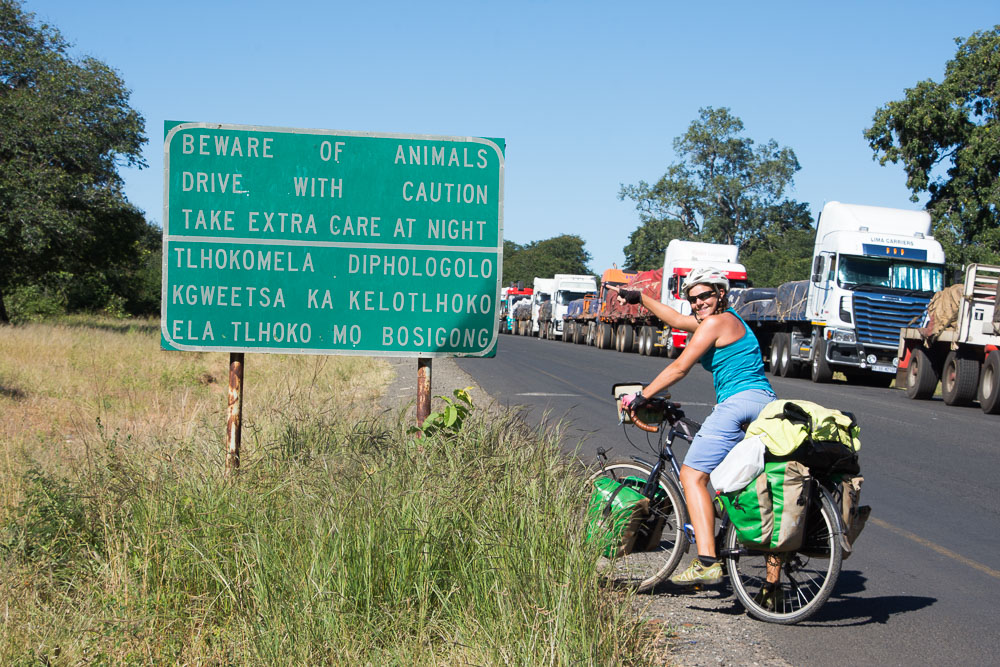
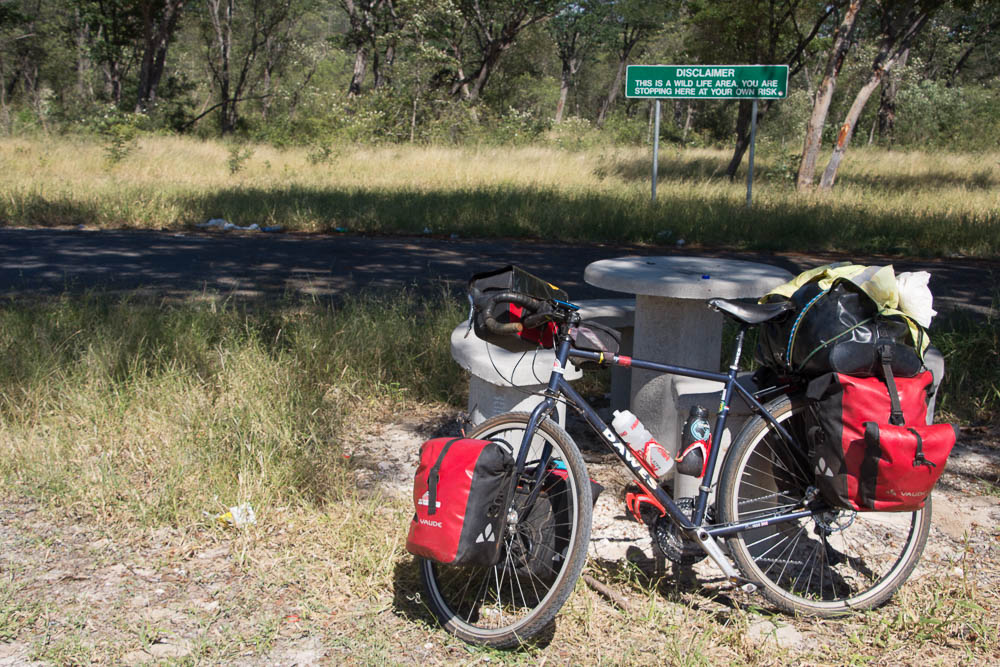
Taking a break with the sign warning of animals behind
At Bakwena Lodge, Adam gave us parting words that African animals are much like icebergs. It’s not the ones that you can see that are the problem; it’s the ones you can’t. So with that warning ringing in our ears, we cycled along the long, straight flat road towards our first night’s stop scanning the bush constantly for any sign of wildlife.
We were disappointed to see only one elephant on the first day, on the road known as the ‘Elephant Highway’. When it saw us, it turned on its heels and ran into the bush. Rather that than at us.
A headwind made progress tough going and, due to a later start than expected, we were battling against time. We both had to put in a lot of effort to fight the headwind. When we finally reached Pandamatenga, I went into the shop to feed our daily Coke habit and came out to find Emily slumped against the wall, absolutely zonked.
After a sugar fix, we were back on the road. It was now 4pm, and we had 28 kilometres to complete and ascend the tower before we could be assured of safety.
We received a text from farmer Paul. “Be careful,” It read, “Botswana’s largest pride of lions lives 20km south of Pandamatenga”.
This made us put in even more effort on the bike. Emily, who’d been struggling with the heat and headwind all afternoon, found some energy out of nowhere, and we made good speed towards our destination.
8km short of the tower, we rode over a cattle grid that marked the transition from ‘safer’ (although not entirely safe) farming land to the open bush again. Soon afterwards, we were stopped by an Afrikaans lady who asked us where we were going because it was getting late and wild animals were around. We explained we were going to sleep up the lookout tower. “You know that baboons live there? ” she said, “You’ll have to fight the baboons for the tower. They’ll probably move away, but they’ll bark at you throughout the night!”
This made Emily question my idea even more, but I reassured her and the lady that we’d be fine. The lady drove off, and Emily told me I was being “belligerent”.
We arrived at the tower just as the sun was touching the tops of the trees. In this part of the world, the sun drops behind the horizon like a lead balloon, so we didn’t have much time to make it to the top of the tower.
But climbing the tower was a lot easier said than done.
The platform was high and was reached by a very small, rickety vertical ladder. It was also covered in baboon poo.
Being a gentleman, I invited Emily to go first.
She made it a few rungs up before asking if there was another option. Nearby, there was a compound of disused buildings, so we went over and tried to find a way through the padlocked gate. We couldn’t, so there was no other option but to give the tower another go.
This time, Emily made it halfway up before being overcome by her fear of heights. I thought about ‘motivating’ her to keep climbing by telling her that lions were coming but didn’t think it would go down too well. She clung on bravely, baboon poo oozing between her fingertips, before deciding that she couldn’t continue.
To be fair, even if we’d made it to the top, it would have been a cold and uncomfortable night, and I’d have had to have done 12 shuttle runs up the tower to get our kit up there (for fear of our precious panniers being ripped open by prying animals).
In the meantime, the efforts of the afternoon’s sprint had caught up with me, and I started to feel feint and started retching. We needed to get out of there.
We headed back to the road to thumb a lift back to the ‘safer’ side of the cattle grid. The second vehicle stopped and offered us a lift but, just then, the Afrikaans lady who’d stopped us earlier returned with her husband and son and invited us to stay at their house. In fact, they had come along to check on us and bring us some coffee. I accepted her offer before she could finish her sentence.
En route, their son told us they had a “very stupid” dog because it kept on sitting on puff adders. Referring to our hosts’ dog in Kampala that had chewed my Vaude sleeping mat, I told him that I also knew a very stupid dog. “It’s so stupid it walks backwards and wags its head”. Everyone laughed. When the laughter died down, the boy, in his strong Afrikaans accent, said, “I don’t know what you just said, but I laughed anyway because everyone else did!” which made us all laugh even more.
We are incredibly grateful to Herman and Anname for coming to rescue us that night and giving us a lovely shower, meal and somewhere to sleep that wasn’t covered in baboon poo. They were also kind enough to drop us back at the tower the next morning, so we didn’t have to do the additional 30km.
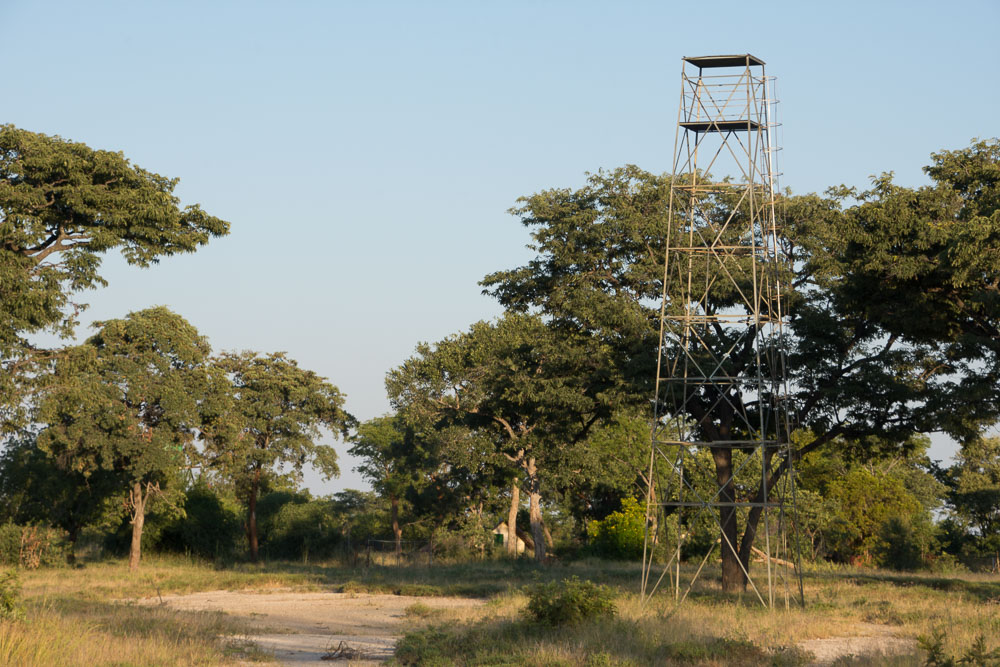
The Lookout tower where we’d planned but failed to camp
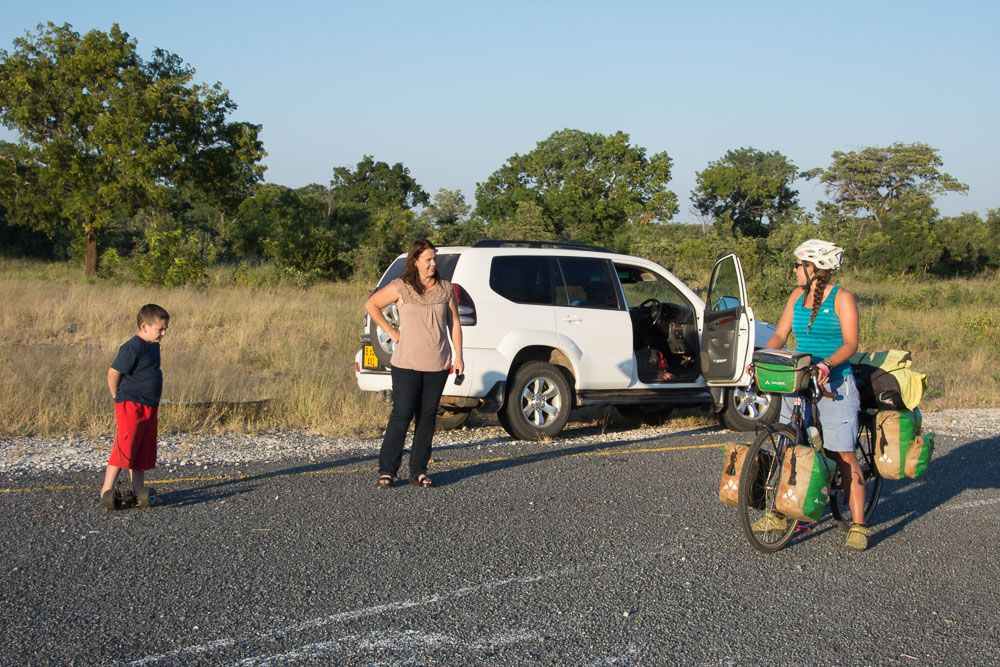
Annoyingly, we have lost the piece of paper with Herman and Anname’s address so, if you’re reading this, please do contact us as we’d love to send you a personal thank you.
The next day we battled the headwind on the long road south. Sightings of warthog and giraffe livened up the journey but, in truth, we were still on edge as we scanned the roadside bush for big cats.
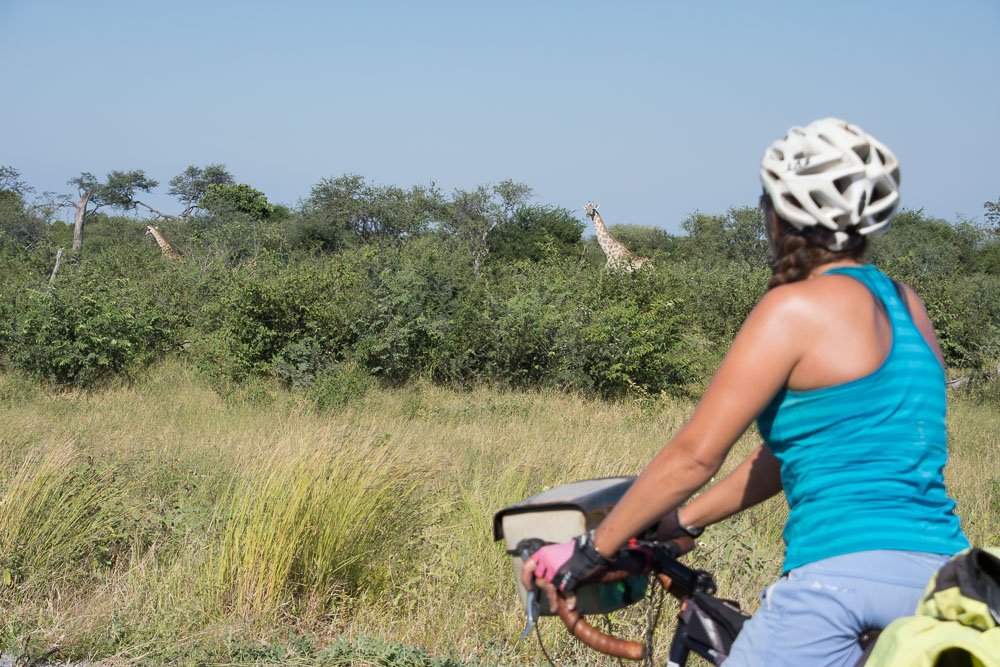
Sightings of giraffes livened up the journey
We made it to Elephant Sands, a delightful camp set around a waterhole. As its name suggests, elephants frequent it, but there’s plenty of water around in the bush due to recent rains, so the elephants don’t need to come to this specific waterhole. Although we didn’t spot any elephants at the camp, we had a peaceful night’s sleep and breakfasted whilst cheeky hornbills perched on our bikes.
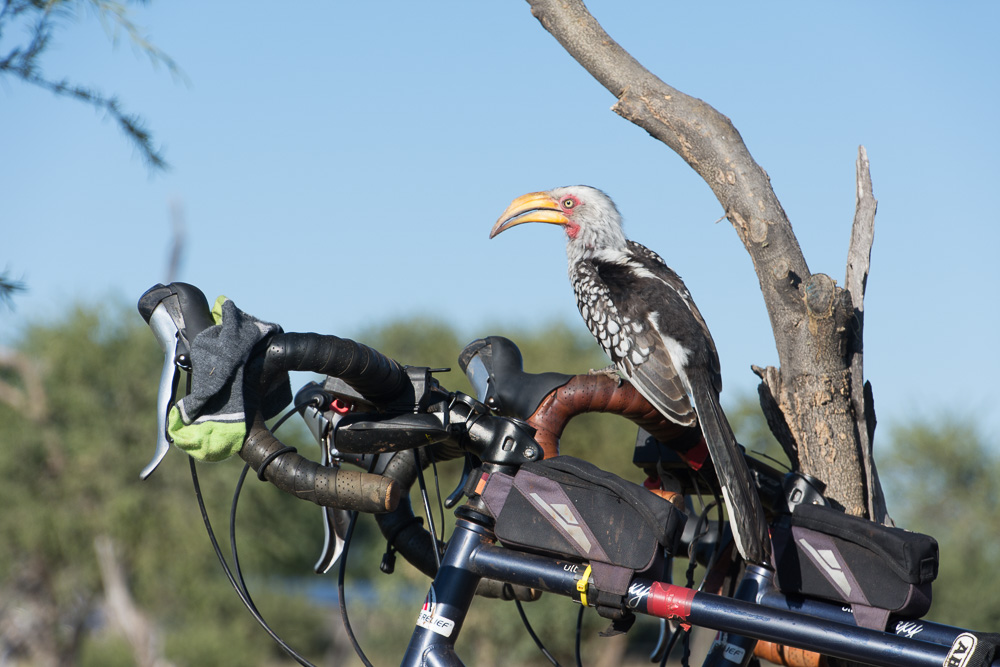
A cheeky hornbill perched on our bikes as we breakfasted at Elephant Sands
We made it to Nata the next day, picked up some provisions, and headed to Nata Lodge, where we camped for two nights. We met Stuart and Sheelagh, Zimbabweans now living in Australia and were on holiday in Botswana. When they lived in Zim, they were good friends with Chris and Hillary, with whom we stayed in Zambia. Small world.
Nata Lodge sits on the edge of the Makgadikgadi and Nxai salt pans. It’s the largest network of salt pans in the world – the same size as Switzerland. Having seen the (former) Top Gear team drive across them a few years ago, I’d always wanted to visit. We booked onto an evening tour to see them. We were more than a little disappointed when the guide pulled up at a vast lake and explained that the pans were flooded because of the rains. A warning would have been nice.
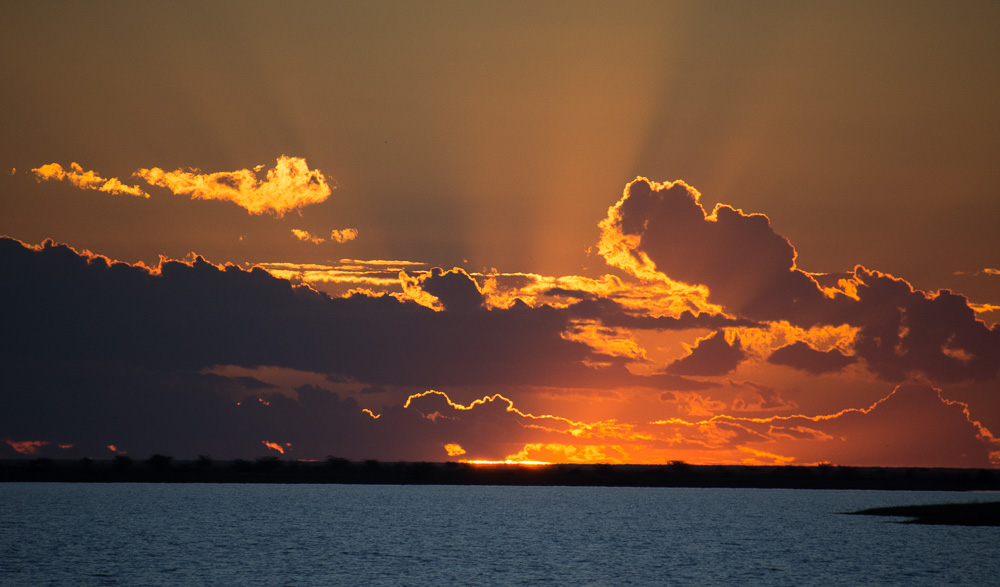
The sun sets over the Makgadikgadi Pan – which was flooded on our visit
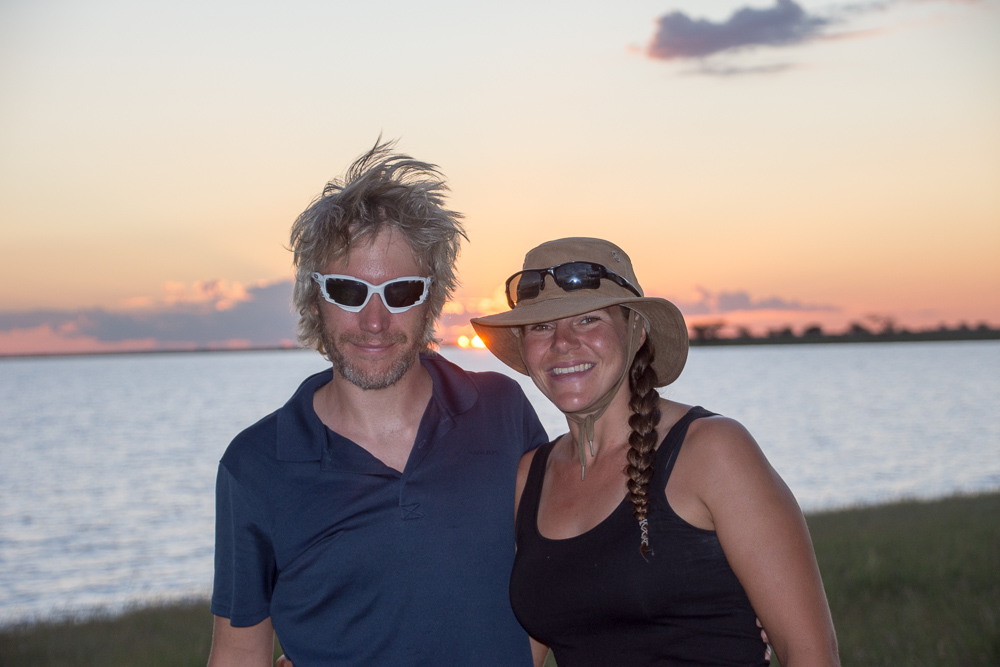
The adventurers at the Makgadikgadi Pan
We left Nata on my birthday and started early to get our 100km done in good time to enjoy our stay at Planet Baobab. It’s an impressive lodge let around huge baobab trees, and I allowed myself a birthday beer whilst sitting by the pool.
The next morning, we were taking a short break under the shade of a thorn tree at the side of the road when a 4X4 with a familiar logo passed. It was the Tour d’Afrique – the organised and supported Cairo to Cape Town cycle ride. They stopped to say hi and invited us to pop in for a cup of tea as we passed their camp 30km up the road.
We did and chatted to front-runners Rupert and Katja. That cup of tea turned into two or three and, before we knew it, we decided to make up our miles the next day and camp the evening with them.
We’d been following the Tour d’Afrique’s progress and were wondering when they were going to pass us. It was great to spend time with other cyclists making a similar journey but with a very different purpose, schedule and budget to ours.
Having three meals a day and a mechanic at your disposal sounded like heaven to us, but, on reflection, we wondered if they’d missed out on many of the experiences that have made our adventure so special; such as market traders in Sudan refusing payment for our vegetables, or being invited to stay in locals’ houses. Perhaps the Tour d’Afrique gives the safety ‘cocoon’ that some people who want to cycle in this continent desire? If so, it’s not a bad cocoon to be in, and we had a lot of fun with the team that night and were very thankful for the delicious meal they cooked us.
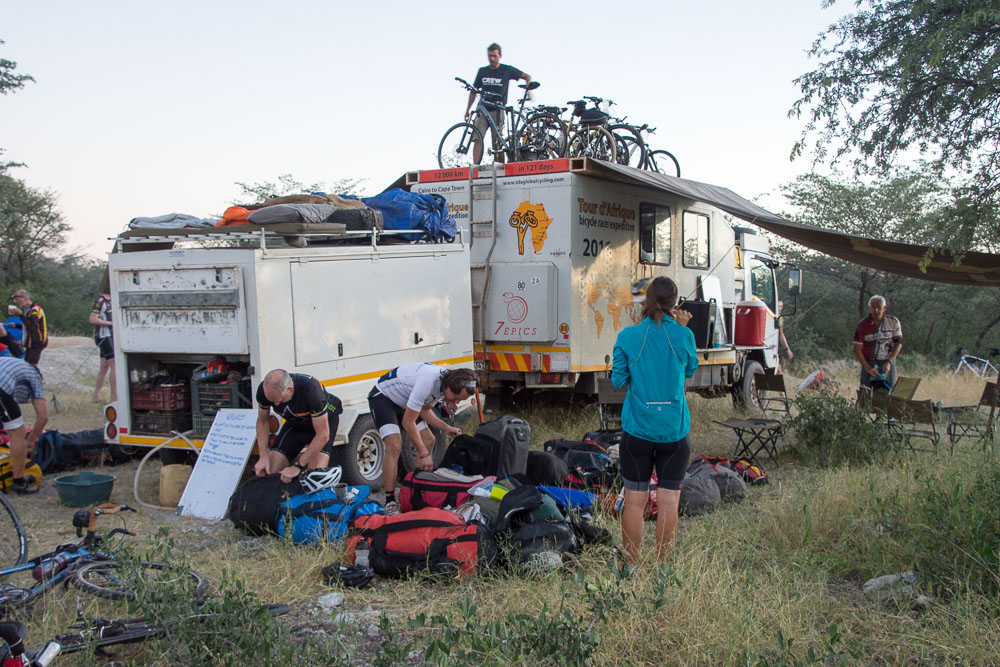
The Tour d’Afrqiue bandwagon rolls into ‘town’
We headed west to Maun, where we had a wonderful couple of nights with Hattie and Chris and their 3 beautiful daughters Isla, Ottilie and Amelia. Hattie is alumni of Emily’s old School and is now a renowned scientific researcher on herbivores. We tried on some of the animal tracking collars that emit signals several times a minute and joked that our parents would be over the moon if we’d worn these on our trip instead of the 30-minute update we have on our London to Cape Town Live GPS Tracker. I had fun throwing tennis balls for the dog, but the poor thing had to rely more on smell than on its deteriorating sight due to too many run-ins with spitting cobras.
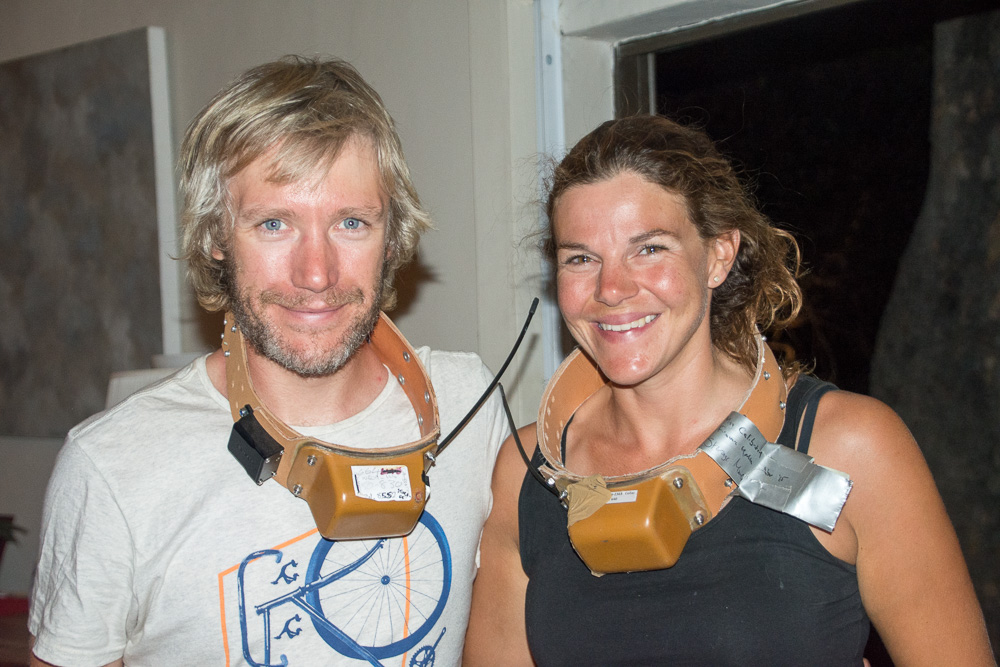
We tried on some of the animal tracking collars that emit signals several times a minute and joked that our parents would be over the moon if we’d worn these on our trip instead of the 30-minute update we have on our London to Cape Town Live GPS Tracker
Maun lies on the edge of the Okavango Delta.
We’d have loved to have paid a visit, but you need bags of cash to do so. Botswana has a ‘high value/low volume’ approach to tourism, and the inland delta is home to some of the most luxurious, exclusive and expensive lodges in the world. We’ll save that for another day.
Instead, we continued west and put in two gruelling 150+ kilometre days, and wild camped in the (now safe) bush. Towards the end of the 4th day, we crossed into our 24th and penultimate country, Namibia. A few kilometres after crossing the border, we camped at the Zelda Guest Farm, where we saw more animals, albeit in captivity, including warthogs, emus and a pair of young leopards.
At Zelda’s, we met a group of Kiwis travelling in a tour group. One of them asked whether we found it “boring” cycling on such long flat roads. We told her it wasn’t as there were plenty of things to think about.
Yes, the roads are long. Cycling towards a never-ending horizon with little in the way of visual stimuli is mentally challenging. But, I spend that time thinking about the family and friends who’ve been in touch with their support but also about those who haven’t. I also think about the foods I miss, the things I want to achieve when I return home, and, to be honest, anything else that’ll keep my mind from the pain in my ‘backside’ when I’m spending 10 or more hours a day in the saddle. Above all, I try to think about anything to get annoying songs, earworms, out of my head. So, boring? No, plenty is going on!
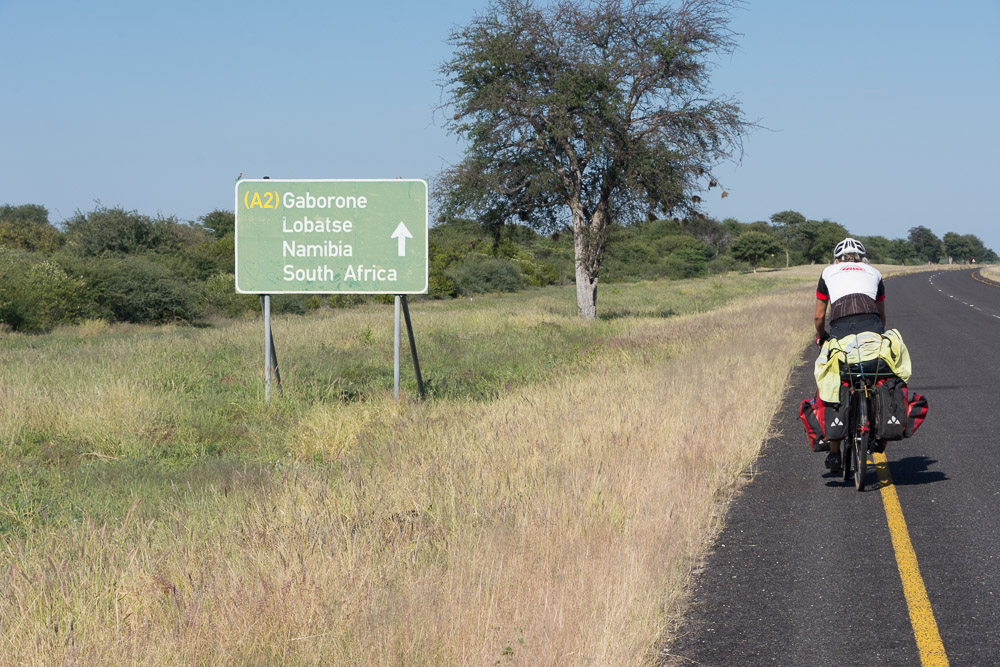
The first sign for South Africa!
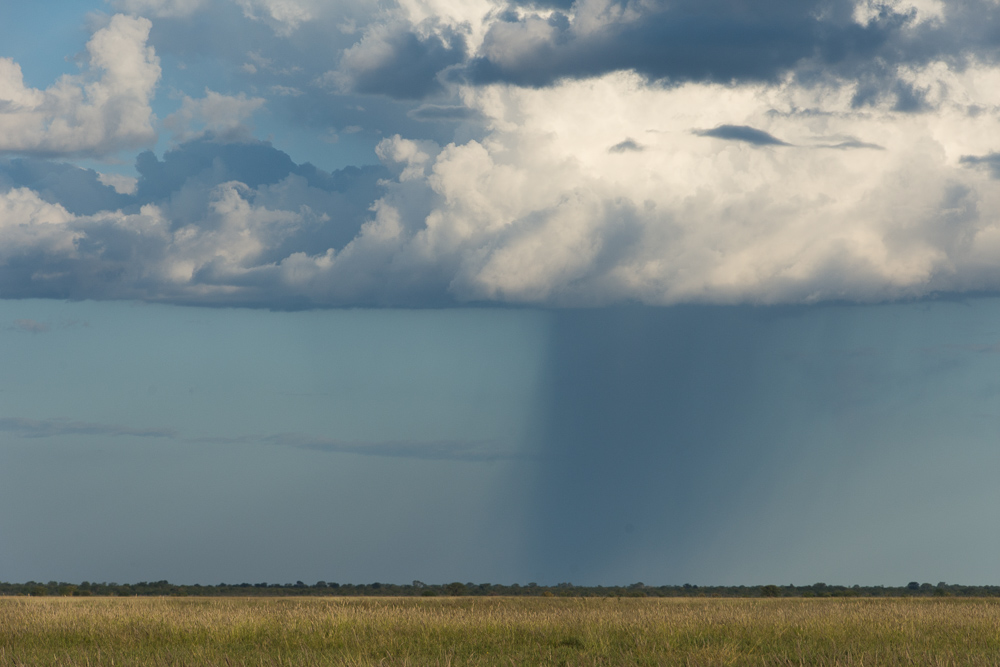
A ‘cartoon-style’ rain cloud
In Gobabis, the ‘meat capital of Namibia’, we were grateful to Warm Showers host Tinus for giving us the keys to his house even though he’d travelled to a wedding in South Africa. And, halfway between Gobabis and Windhoek, we were again grateful to the proprietor of a biltong shop for allowing us to camp within the grounds.
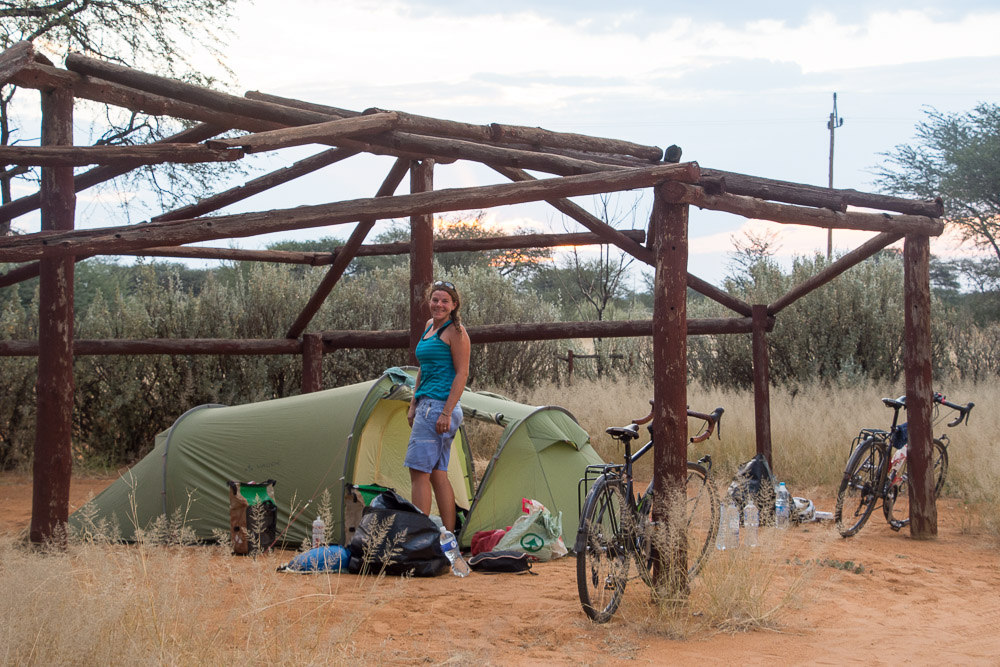
Camping at the biltong shop halfway between Gobabis and Windhoek
We made the final 100km to Windhoek (which got quite hairy in the last hilly 40km past the international airport due to traffic). We stayed for a couple of days well-needed R&R at the Cardboard Box backpackers campsite before heading 400km west to Swakopmund for an eagerly anticipated reunion of family on Emily’s mother’s side.
Cycling through Botswana and into Namibia has been much more demanding than I expected. Although it’s been mostly flat, we’ve put in some very long days in the saddle, which has caused us both lots of pain. Together with the headwinds and heat, we’ve both struggled, and we’ve both agreed to not cycle over 130km in one day unless it’s absolutely necessary. It’s just not worth the strain that it’s putting on our bodies.
That said, we’ve given ourselves quite a punchy target for our last section from Swakopmund to Cape Town – 1,800 kilometres across the mighty Namib Desert in just 18 days – so we might just have to break our promise!

